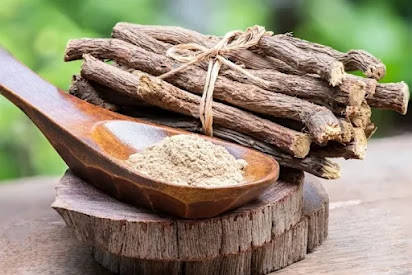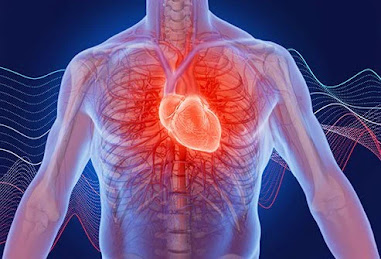Licorice compounds proposed as effective candidates for treatment of COVID-19 Download PDF Copy
Licorice compounds proposed as effective candidates for treatment of COVID-19
Download PDF Copy
A recent Frontiers in Pharmacology journal study utilizes bioinformatics, molecular docking, and molecular dynamics (MD) methods to determine the efficacy of licorice in managing coronavirus disease 2019 (COVID-19). More specifically, the researchers describe the different mechanisms by which licorice reduces the inflammatory response, inhibits tissue damage and cell death, regulates cell survival, and promotes tissue growth following severe acute respiratory syndrome coronavirus 2 (SARS-CoV-2) infection.
Background
There is a lack of effective COVID-19 therapeutic agents with few side effects. However, numerous herbal medications appear to be effective in limiting the entry and replication of SARS-CoV-2 in host cells.
Several studies have found that many active compounds within licorice, for example, can effectively neutralize SARS-CoV-2 and minimize COVID-19 symptoms. These effects are likely due to the ability of these components to disrupt the interaction between the SARS-CoV-2 receptor-binding domain (RBD) and the host cell angiotensin-converting enzyme 2 (ACE2) receptor.
Furthermore, quercetin, which is an active component of licorice, appears to reduce interleukin-6 (IL-6) levels, whereas triterpenoid licorice saponin A3 (A3) and glycyrrhizic acid (GA) target the SARS-CoV-2 RBD and non-structural protein 7 (nsp7).
About the study
Molecular dynamics (MD) relies upon large computer clusters to obtain data on the physicochemical properties, microstructure, and performance characteristics of a material of interest. MD simulations have provided important information on protein, protein-ligand, protein-protein, protein-DNA, and various other biomolecular interactions to understand these processes at the molecular level better.
In the current study, MD allowed the researchers to assess the affinity of licorice active components to various viral targets. Furthermore, MD stimulated the stability of these bound complexes for further analysis.
The researchers also utilized several bioinformatics platforms, including protein-protein interaction (PPI), Kyoto Encyclopedia of Genes and Genomes, and gene ontology (GO) analysis, to assess the potential mechanisms by which licorice elicits antiviral effects against SARS-CoV-2. In addition, molecular motion system simulations were also used to determine the efficacy of licorice in treating COVID-19 at the atomic level.
Study findings
The Traditional Chinese Medicine System Pharmacology Database (TCMSP) database was used to retrieve 200 compounds from licorice, eleven of which were screened. Of the 255 and 4,628 gene targets of licorice and COVID-19, respectively, 101 targets were found to be shared between licorice and COVID-19.
Of these 101 gene targets, 27 were core intersectional gene targets. Enrichment analysis of these gene targets in the DAVID database revealed several processes highly correlated to cytokine transmission and inflammation. Most of these processes involved regulating gene expression, cytokine-mediated inflammatory response, and signaling pathways.
A disease-core gene target network was constructed to demonstrate the main biologic processes and signaling pathways of licorice for treating COVID-19. Results of molecular docking revealed many hydrophobic interactions, hydrogen bonding, cation-pi conjugation, and pi-pi conjugation.
Eleven of these key gene targets were subsequently selected for molecular docking analysis. The complex formed following the interaction between the licorice active ingredient Phaseol and both CXC motif chemokine ligand 8 (CXCL8) and interleukin 2 receptor subunit alpha (IL2RA) were mediated by hydrophobic interactions, thus indicating the stability of the bonds within both of these complexes.
CXCL8 attracts neutrophils, basophils, and T-cells to the site of infection. Furthermore, CXCL8 participates in various pro-inflammatory signaling cascades and other cytokines. Thus, the binding of Phaseol to CXCL8 may reduce the activation of different inflammatory cells.
IL2RA appears to be involved in several drug and IL-2 pathways that participate in the activation of immune cells and regulation of the tumor microenvironment. Thus, Phaseol may also elicit anti-inflammatory effects through its interaction with this protein.
Other important complexes analyzed include those between licorice active ingredients Glyasperin F and Glycyrol and gene targets matrix metallopeptidase 1 (MMP-1) and signal transducer and activator of transcription (STAT3), respectively.
PPI analysis indicated that Glycyrol acts on STAT3 to regulate cell proliferation and survival, whereas this method found that MMP1 regulates protein hydrolysis and processing.
GO analysis also found that MMP1 participates in calcium binding and metallopeptidase activity. Since MMP1 also has an important role in various inflammatory diseases and pathological processes, regulating this metalloproteinase by Glyasperin F may be responsible for certain antioxidant and anti-inflammatory properties of licorice, particularly when used in the treatment of COVID-19.
Conclusions
The current study provided in silico predictions of how several active ingredients within licorice may interact with different COVID-19 targets. Some of the key complexes identified in this study include CXCL8/Phaseol, IL2RA/Glycyrol, STAT3/Glycyrol, and MMP1/Glyaspern F. Taken together; these findings provide new insights into the mechanisms by which different active small molecules of licorice elicit antiviral effects against SARS-CoV-2.


Comments
Post a Comment